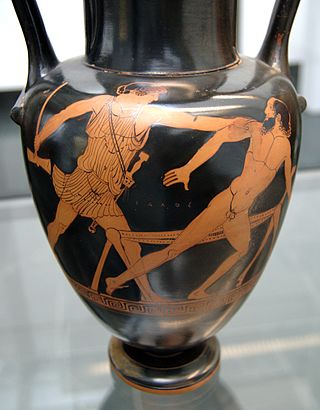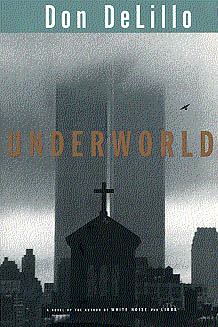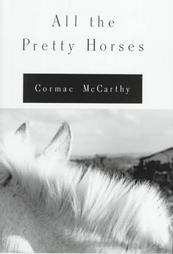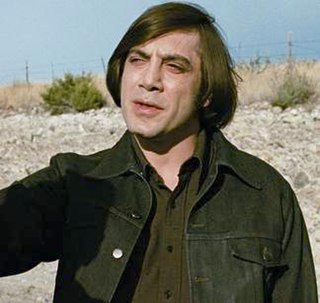
In Greek mythology, Procrustes, also known as Prokoptas, Damastes or Polypemon, was a rogue smith and bandit from Attica who attacked people by stretching them or cutting off their legs, so as to force them to fit the size of an iron bed.

Underworld is a 1997 novel by American writer Don DeLillo. The novel is centered on the efforts of Nick Shay, a waste management executive who grew up in the Bronx, to trace the history of the baseball that won the New York Giants the pennant in 1951, and encompasses numerous subplots drawn from American history in the second half of the twentieth century. Described as both postmodernist and a reaction to postmodernism, it examines themes of nuclear proliferation, waste, and the contribution of individual lives to the course of history.

Cormac McCarthy was an American writer who authored twelve novels, two plays, five screenplays, and three short stories, spanning the Western and postapocalyptic genres. His works often include graphic depictions of violence, and his writing style is characterised by a sparse use of punctuation and attribution. He is widely regarded as one of the greatest American novelists.
Osnaburg is a general term for coarse, plain-weave fabric. It also refers specifically to a historic fabric originally woven in flax but also in tow or jute, and from flax or tow warp with a mixed or jute weft.
John Joel Glanton was an early settler of Arkansas Territory. He was also a Texas Ranger and a soldier in the Mexican–American War, and the leader of a notorious gang of scalp-hunters in Northern Mexico and the Southwestern United States during the mid-19th century. Contemporary sources also describe him as a murderous outlaw and prominent participant in the Texas Revolution. He appears as a violent figure in the works of the prominent Western writers Larry McMurtry and Cormac McCarthy.
A judge is an official who presides over a court.

Blood Meridian; or, The Evening Redness in the West is a 1985 epic historical novel by American author Cormac McCarthy, classified under the Western, or sometimes the anti-Western, genre. McCarthy's fifth book, it was published by Random House.

All the Pretty Horses is a novel by American author Cormac McCarthy published by Alfred A. Knopf in 1992. It was a bestseller, winning both the U.S. National Book Award and the National Book Critics Circle Award. It is the first of McCarthy's "Border Trilogy".

Child of God (1973) is the third novel by American author Cormac McCarthy. It depicts the life of a violent outcast and serial killer in 1960s Appalachian Tennessee.

Cities of the Plain is the final volume of American novelist Cormac McCarthy's "Border Trilogy", published in 1998. The title is a reference to Sodom and Gomorrah.

No Country for Old Men is a 2005 novel by American author Cormac McCarthy, who had originally written the story as a screenplay. The story occurs in the vicinity of the Mexico–United States border in 1980 and concerns an illegal drug deal gone awry in the Texas desert back country. Owing to the novel's origins as a screenplay, the novel has a simple writing style that differs from McCarthy's earlier novels. The book was adapted into a 2007 Coen brothers film of the same name, which won four Academy Awards, including Best Picture.

Samuel Emery Chamberlain was an American soldier, painter, and author who traveled throughout the American Southwest and Mexico during the mid-19th century.
Gnosticism in modern times includes a variety of contemporary religious movements, stemming from Gnostic ideas and systems from ancient Roman society. Gnosticism is an ancient name for a variety of religious ideas and systems, originating in Jewish-Christian milieux in the first and second century CE.

The Road is a 2006 post-apocalyptic novel by American writer Cormac McCarthy. The book details the grueling journey of a father and his young son over a period of several months across a landscape blasted by an unspecified cataclysm that has destroyed industrial civilization and almost all life. The novel was awarded the 2007 Pulitzer Prize for Fiction and the James Tait Black Memorial Prize for Fiction in 2006. The book was adapted into a film of the same name in 2009, directed by John Hillcoat.

Anton Chigurh is a fictional character and the main antagonist of Cormac McCarthy's 2005 novel No Country for Old Men. In the 2007 film adaptation of the same name, he is portrayed by Javier Bardem.

Harold Bloom was an American literary critic and the Sterling Professor of humanities at Yale University. In 2017, Bloom was called "probably the most famous literary critic in the English-speaking world". After publishing his first book in 1959, Bloom wrote more than 50 books, including over 40 books of literary criticism, several books discussing religion, and one novel. He edited hundreds of anthologies concerning numerous literary and philosophical figures for the Chelsea House publishing firm. Bloom's books have been translated into more than 40 languages. He was elected to the American Philosophical Society in 1995.

Peter Josyph is a New York artist who works concurrently as an author, a painter, an actor-director, a filmmaker, and a photographer.

The Daybreakers is a 1960 novel set in the latter half of 19th-century America (1867), written by Louis L'Amour. It is the first novel that he wrote about a Welsh and English family surnamed Sackett. He later wrote five novels that take place before The Daybreakers. There are a total of seventeen novels in "The Sacketts" series.

A list of works by or about Cormac McCarthy, the American novelist, playwright, and screenwriter. McCarthy published twelve novels, spanning the Southern Gothic, Western, and post-apocalyptic genres, as well as multiple short-stories, screenplays, plays, and an essay.

The Passenger is a 2022 novel by the American writer Cormac McCarthy. It was released six weeks before its companion novel Stella Maris. The plot of both The Passenger and Stella Maris follows Bobby and Alicia Western, two siblings whose father helped develop the atomic bomb.

















